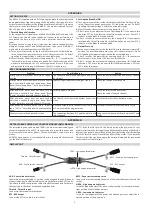
737 MAX Flight Crew Operations Manual
Supplementary Procedures -
Adverse Weather
MN-FLT-OH-201
SP.16.23
• In the event of a crosswind during 180° turns, turn away from the
wind if possible to minimize sand and dust ingestion.
• Whenever possible, avoid situations that would require the airplane
to be brought to a complete stop.
• Avoid excessive braking. The presence of sand or dust will increase
brake wear.
Takeoff
Do the following to minimize sand and dust ingestion by the engines
during takeoff:
• Use the maximum fixed derate and/or assumed temperature thrust
reduction that meets performance requirements.
• Make an No Engine Bleed Takeoff if operations permit. If cabin
and flight deck temperatures can be maintained at a tolerable
temperature, consider an Unpressurized Takeoff.
• Before takeoff, allow sand and dust to settle if conditions allow.
• Do not take off into a sand or dust cloud.
• Use a rolling takeoff. Whenever possible, avoid setting high thrust
at low speed.
• When visible sand and dust exist, consider delaying flap retraction
until above the dust cloud, if operations permit.
Approach
Do the following, conditions permitting, to minimize sand and dust
ingestion:
• Make an No Engine Bleed Landing if operations permit. If cabin
and flight deck temperatures can be maintained at a tolerable
temperature, consider an Unpressurized Landing.
Landing
Do the following to minimize sand and dust ingestion by the engines
during landing:
• Use autobrakes on landing to help minimize the need for reverse
thrust.
• Performance permitting, minimize the use of reverse thrust to
prevent ingestion of dust and sand and to prevent reduction of
visibility. Reverse thrust is most effective at high speed.
After Landing Procedure
Do the normal After Landing Procedure with the following
modifications:
March 1, 2021
















































